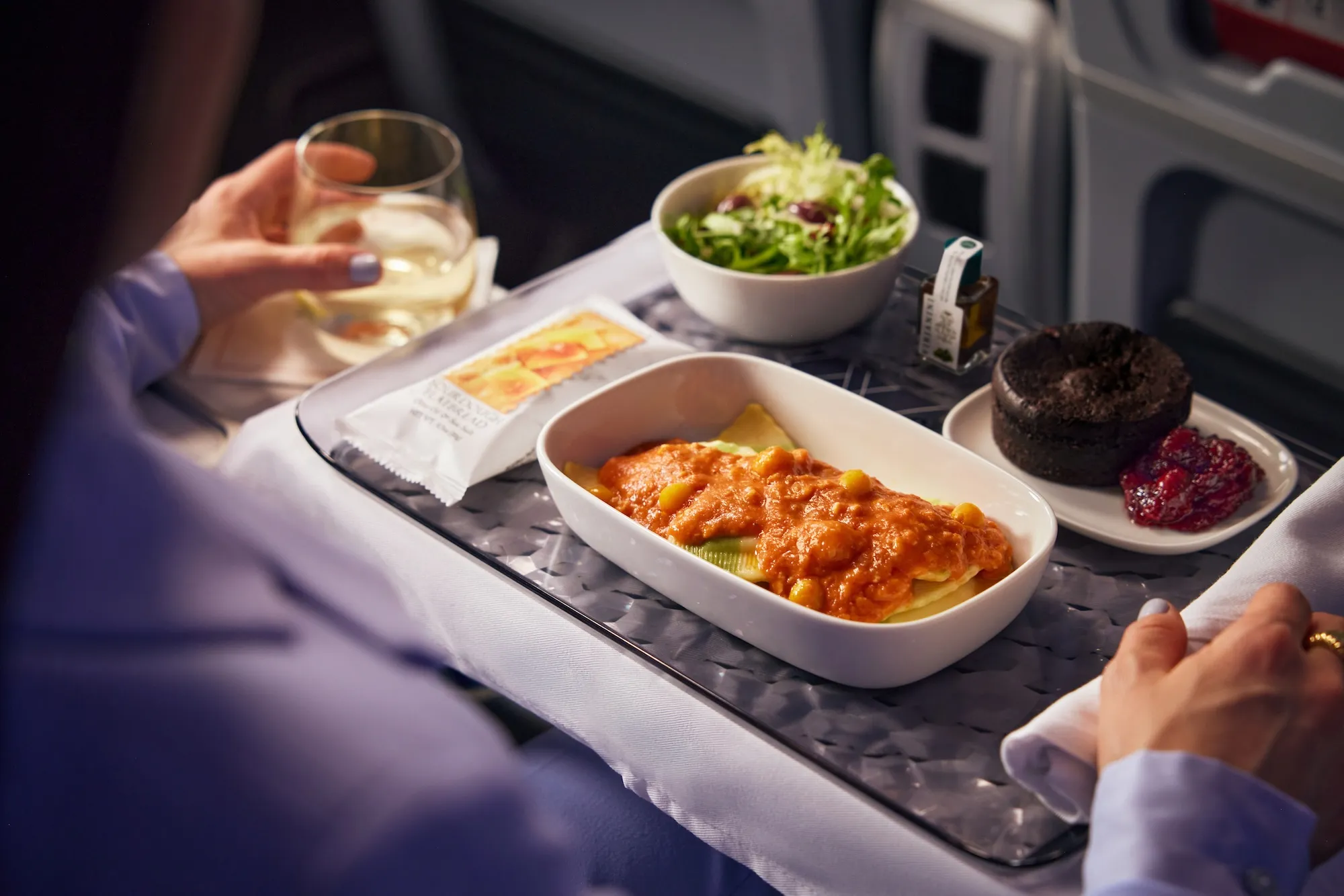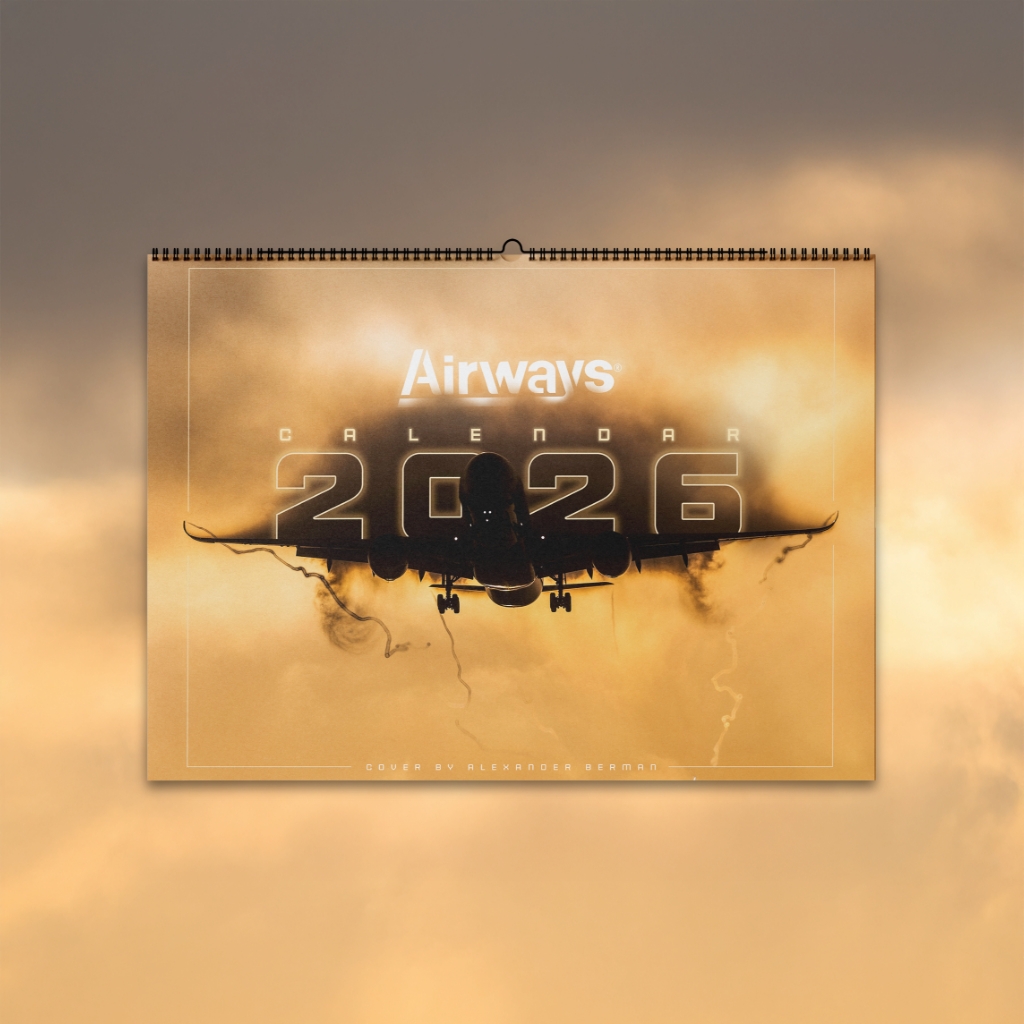DALLAS — When I first started flying with airlines, I always wondered how these little trays of food, served thousands of feet above the ground, could still be hot, flavorful, and fresh.
It just didn’t make sense. Everything seemed too perfectly timed. But as I got deeper into the aviation world, I learnt there’s a whole complex, behind-the-scenes operation that makes all of this happen.
It’s not just cooking and serving; airline catering is a science, a dance, and sometimes even a gamble with logistics. What appears as a simple tray of rice, curry, and a sandwich, have already been touched by dozens of hands, passed through temperature-controlled environments, and precisely portioned to meet both nutritional standards and flight crew requirements.
It’s truly a world of its own, one that most passengers rarely even think about while sipping their tea and watching in-flight entertainment.
Where It All Begins: The Flight Schedule
It all starts with a schedule. Months before a flight even takes off, catering companies already know which airline needs what and when. The planning begins with passenger counts, destination regulations, and flight duration.
A long-haul flight from Delhi (DEL) to Frankfurt (FRA) needs a lot more than a short hop from Mumbai (BOM) to Chennai (MAA). There’s more food to pack, more variety, and a lot more to think about. The catering team also needs to check on details such as local food regulations, religious restrictions, and whether the airline is adjusting its menus for the season.
Once all that’s clear, they begin purchasing ingredients that match the airline's requirements and are safe to use. Even something simple, like how many vegetarian and non-vegetarian meals to carry, isn’t a guess. They review past flight data to determine what passengers typically choose and plan accordingly.
Menus are planned, tested, and frozen well in advance of the scheduled time. Some airlines update them quarterly, while others do so seasonally. And yes, even the tiniest changes take weeks of approvals.
When you read “chicken tikka with saffron rice” on a menu, that dish has been taste-tested, cabin-tested, audited, and signed off by multiple departments. Any ingredient substitution, even down to a spice, has to be documented, especially when airlines cater to passengers with allergies. Every menu variation, from economy to first class, is documented and aligned with the exact aircraft and class configuration.
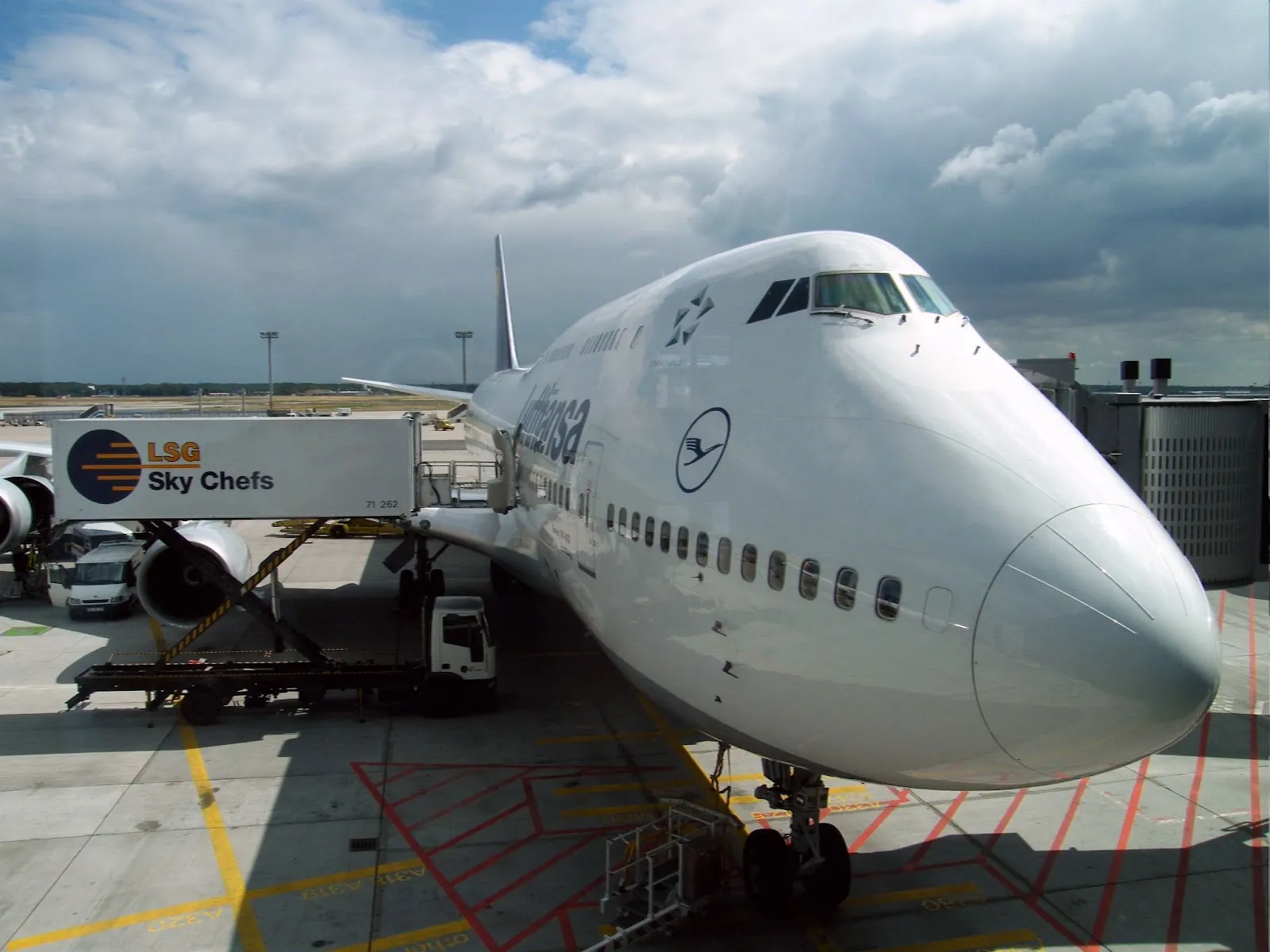
The Catering Giants
So who’s behind all of this magic? Ever heard of LSG Sky Chefs? Or DO & CO? These are massive companies running the kitchens behind your meals. LSG is the catering arm of Lufthansa (LH), while DO & CO collaborates with Turkish Airlines (TK), Emirates (EK), and other airlines.
In the United States, one of the most prominent players is Gate Gourmet, which services major carriers such as American Airlines (AA), Delta Air Lines (DL), and United Airlines (UA). The company has also recently extended its contract with LSG Group for catering services.
In some parts of Asia, companies like SATS or TajSATS (for Air India (AI)) handle it. These organisations don’t just operate one kitchen per airport; they often run sprawling facilities in multiple terminals, each designed to handle specific airline clients, menu tiers, and levels of security.
These facilities are not your average kitchens. They’re airport fortresses, often located within or adjacent to airport zones, with high security and strict hygiene regulations. Every staff member passes through multiple checks. Entry into the kitchen floor requires sanitized clothing, gloves, hair nets, and even shoe covers. Some facilities take it a step further, installing cleanroom air filters and mandating routine swab tests of work surfaces.
Each dish is cooked in bulk, yes, but it’s treated with the same care as a boutique meal. From quality control officers monitoring seasoning levels to logistics coordinators tracking every shipment, it’s all about precision.
Cooking at Scale, With Precision
Imagine cooking 30,000 meals in a single day. That’s what some of these facilities do. Qatar Airways’ catering facility in Doha, one of the largest in the world, prepares over 200,000 meals a day.
How 175,000 Gourmet Meals Are Made Daily? | Behind the Scenes (4K)
As reported by Condé Nast Traveler, these meals are cooked hours in advance, then blast-cooled to prevent bacterial growth, and are designed to finish cooking midair during final reheating. The process must be so fast and efficient that meals are transported from the stove to cold storage in under 90 minutes. It’s a race against the microbial clock.
What’s remarkable is that airline food has to be cooked to only 90 percent doneness. That’s because the final step of heating happens onboard. Ever noticed how grilled chicken or paneer tikka (a treat for vegetarians) feels soft yet not overdone? That’s the result of perfect timing.
The food gets loaded cold and then reheated in convection or steam ovens on the plane. The chefs even design meals with this in mind, so the food finishes cooking midair. Some caterers even conduct trials where the same dish is reheated multiple times under simulated galley conditions to see how it holds up.
Proteins are partially cooked, rice is under-steamed, and sauces are thickened just enough to prevent spills without drying out. This is why your meal doesn’t taste like something out of a microwave, even though it kind of is.
Taste Testing at 35,000 Feet
One thing that surprised me was how the taste changes in the sky. Studies show that at cruising altitude, your taste buds become less sensitive. Salty and sweet sensations drop by as much as 30 per cent. That’s why meals are seasoned more aggressively. It’s also why tomato juice is weirdly popular on flights. The acidity cuts through the dulled senses. Think about it: how often do you drink tomato juice on the ground?
Catering teams often test meals in pressurised cabins that simulate flight conditions. Some even wear noise-cancelling headsets to replicate the hum of the engines during testing. This isn’t just for fun. That constant background noise also affects taste perception.
Airlines like British Airways (BA) and Japan Airlines (JL) use these tests to build menus that are bold, satisfying, and still recognisable after two hours in a box. Every bite is carefully crafted to awaken your senses at altitude, often featuring spices, acidity, and umami-packed sauces.

Special Meals, Customer Requests
Airline caterers don’t just do chicken or veg. There are over 20 types of special meals, including gluten-free, Jain, kosher, vegan, diabetic-friendly, baby meals, and even raw fruit platters. Each meal type has its own set of guidelines and prep stations.
The kosher kitchen is often sealed and monitored by rabbis. Jain meals follow strict vegetarian practices, excluding root vegetables. Halal meals are prepared with certified meats and utensils.
One chef once shared how a passenger requested a raw papaya salad with no garlic, sugar, or peanuts to be served at exactly 3 hours into the flight. And the crew delivered. There are requests for ketogenic meals, Ayurvedic combos, and even liquid-only diets for medical passengers.
The trick isn’t just preparing them; it’s ensuring they remain uncontaminated and are clearly labelled so the crew doesn’t mix them up onboard. Mistakes here can be particularly serious, especially for those with allergies.
The Loading Process
Catering trucks, also known as high-loaders, are specifically designed to match the height of aircraft doors. Each car is temperature-controlled and follows a strict route. Timing is everything. The food must be loaded close to departure, but with a sufficient buffer to accommodate delays. If a flight is postponed, meals might need to be swapped or discarded, depending on how long they’ve been out of cold storage.
At large hubs like London Heathrow (LHR) or Dubai (DXB), there are multiple catering kitchens. So, for a single Emirates (EK) A380, food might come from 3 different suppliers. There’s also a hierarchy in loading: first-class meals go in first, followed by business and economy. Each cart is labelled with seat numbers, galley positions, and crew instructions. The process is so fine-tuned that even a five-minute delay can ripple down to boarding and pushback schedules.
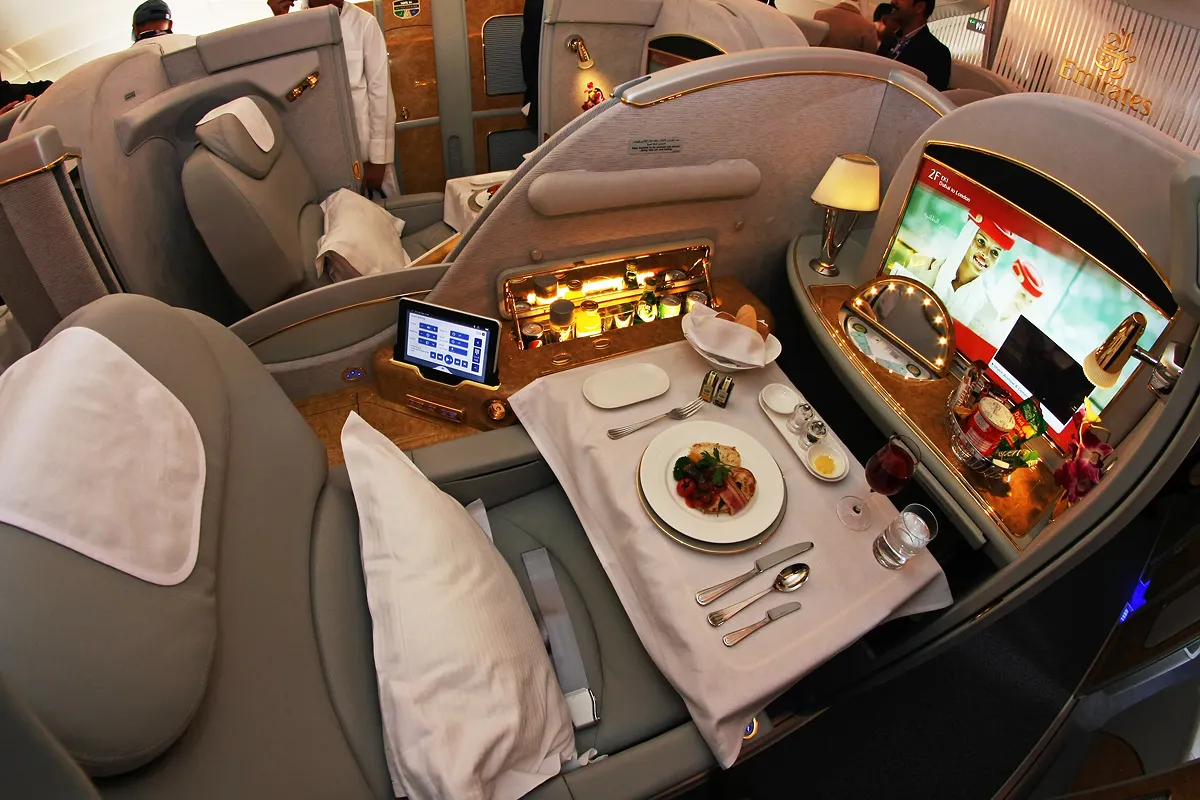
Some airlines, like Emirates, Etihad, or Singapore Airlines, also offer in-flight meals that are freshly prepared or assembled on board by world-class chefs. However, these services require your wallets to be full because, most of the time, they’re limited to passengers flying in premium suites or first class only. Don’t lose that smile, my friend; we’ll get there someday!
Hygiene Is Non-Negotiable
Remember that viral video of a rat in a kitchen? That doesn’t fly here. Airport catering facilities are audited more frequently than restaurants. Every utensil, cart, and surface goes through disinfection. Staff rotation is strict. Some kitchens even separate meat and veg prep areas with physical barriers. There are microbiologists on staff whose only job is to swab, test, and verify.
Gate Gourmet, which prepares over 250 million meals annually, conducts approximately 1,200 food safety checks every day. Temperature logs are digital, and any deviation from the allowed range sends alerts. Some airlines even deploy third-party auditors to inspect surprise shifts. Even if a single component, like a piece of cucumber in the salad you ordered, goes above 4°C for too long, it’s thrown out. No questions asked.
The stakes are high; one case of food poisoning can affect hundreds of passengers, leading not only to lawsuits but also damage to the airline’s reputation.
Cost and Waste Management
Here’s a kicker: the average airline meal costs around US$10 to US$15 to make. However, premium cabin meals can be significantly more expensive. A single first-class meal on Qatar Airways (QR) or Singapore Airlines (SQ) might cost over US$100. That’s including rare ingredients, imported wines, and handcrafted desserts. But cost isn’t the only concern; waste is.
Airlines also track waste data religiously. If passengers don’t touch the bread rolls, expect those to vanish from the next cycle. Lufthansa (LH), for example, uses an AI system called Tray Tracker that scans your meal tray after the flight to check what’s been eaten and what’s been left.
KLM (KL) also operates an AI tool named TRAYS, which predicts passenger no-shows and adjusts meal loads accordingly, resulting in the saving of over 100,000 kilograms of food per year. These systems aren’t just about cutting costs. They’re about being smart, reducing waste, and lightening the airline’s carbon footprint.
Some even go so far as to tweak menus based on time of day, route, and even expected weather conditions, because more passengers might crave soup on a rainy flight than a salad on a sunny afternoon. It’s a whole ecosystem of efficiency hiding behind that little foil lid of aluminium.
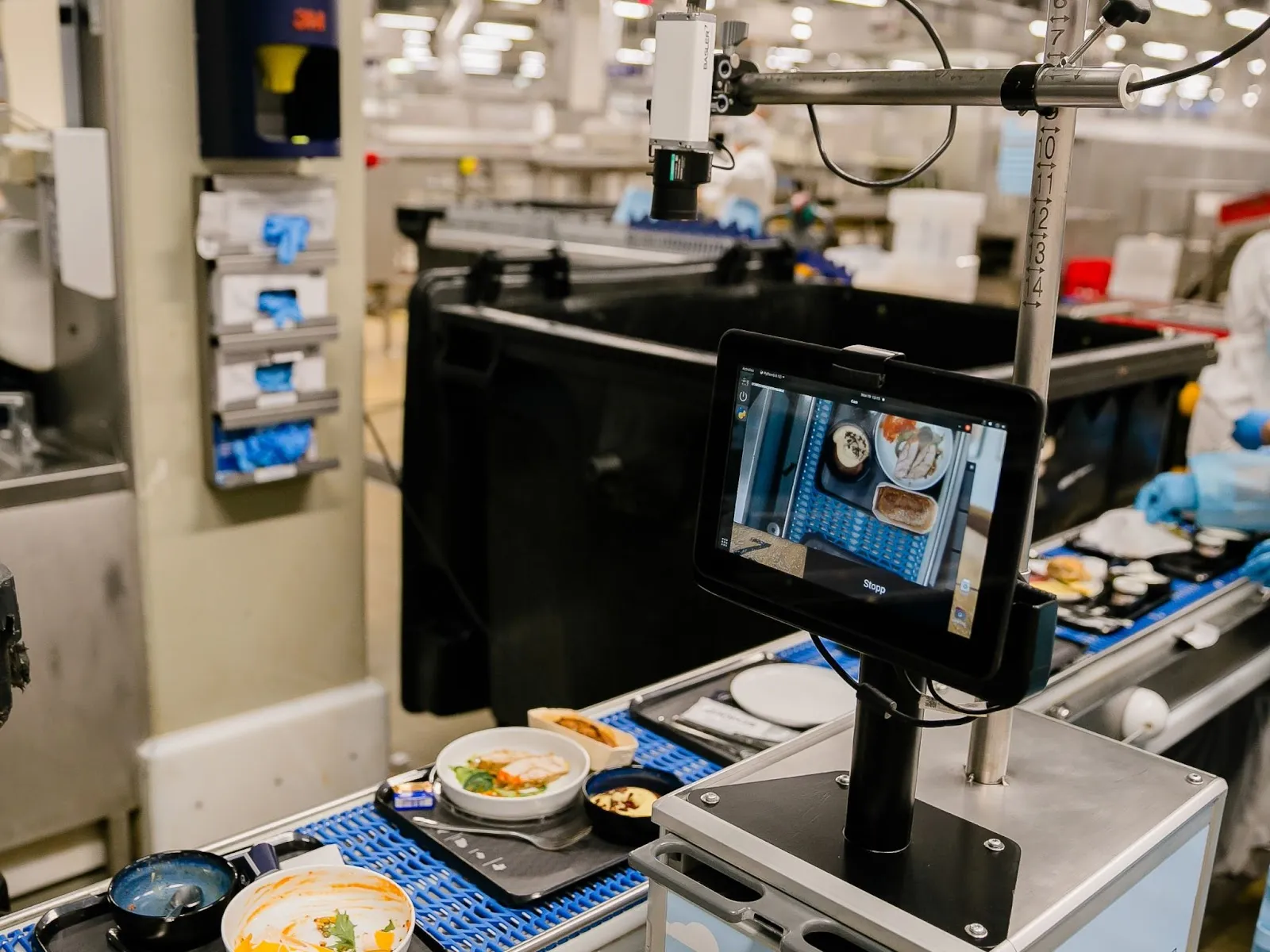
The Forgotten Heroes
Behind the food trays are thousands of workers who rarely get credit. From chefs to sanitization crews to the drivers working the graveyard shift, airline catering is kept alive by people working insane hours with military precision. These are the people who show up when most of the city is asleep, braving fog, rain, and tight schedules.
Flight delays? These folks wait. Last-minute aircraft changes? They adapt. Even during the COVID-19 pandemic, catering teams were among the first to redesign systems for contactless delivery. Some workers didn’t go home for days, living near kitchens in temporary shelters just to keep flights moving. They’re the silent machinery that feeds the skies, and they deserve a spotlight of their own.
What Happens to Leftovers?
Most of the food that leaves the plane uneaten is either incinerated or discarded, depending on local regulations, which can be strict at times. Some airports, such as Amsterdam (AMS) and Singapore (SIN), attempt to recycle or convert waste into biofuel, but strict customs laws prevent most food from being reused. International regulations forbid even sealed items from being reused on other flights.
Some places do try to make use of the extra food, but it’s not super common. A few catering teams team up with local charities or NGOs and pass on the items that are still sealed and untouched. It’s not happening everywhere, but slowly, more people are giving it a shot.
Some airlines are also trying to turn the waste into products like animal feed or fertilizer instead of simply dumping it. And at some big airports, they’ve started setting up proper areas to sort through all the leftovers and throw them out in a way that’s a bit better for the planet.
The Future of Airline Catering
With rising demand for plant-based options, caterers are reinventing menus. Airlines like Air New Zealand (NZ) and JetBlue (B6) are experimenting with more sustainable packaging and less processed food. There’s also a shift toward local sourcing, reducing carbon miles and supporting regional farmers.
Technology is also getting into the mix. Some airlines now allow you to choose your meal through their app before the flight, which helps reduce waste and makes it easier for the catering team to plan. There’s talk of AI kitchens, robots assisting with food prep, and even desserts made with 3D printers. Sounds wild, but it’s already being tested in a few places.
Airlines are also experimenting with items such as biodegradable trays and spoons that can be eaten (yes, some airlines have even tried using biscuit-based cutlery!) and menus that adapt to your travel history.
Final Thoughts
So, next time you open that foil lid, think about everything that meal has been through. It started in a super clean kitchen near the airport, was vigorously tested, got packed into chilled trucks, loaded onto the plane by trained staff, and then warmed up in the air just in time.
Airline food may never get a Michelin star, but behind every bite is a world full of effort, timing, and a little bit of magic.
I used to think it was just some reheated leftovers. But now I know it’s a mini miracle that all of it comes together the way it does. So maybe give that curry another shot.
Stay tuned and keep following Airways. Follow us on LinkedIn and Instagram for the latest updates as well!
